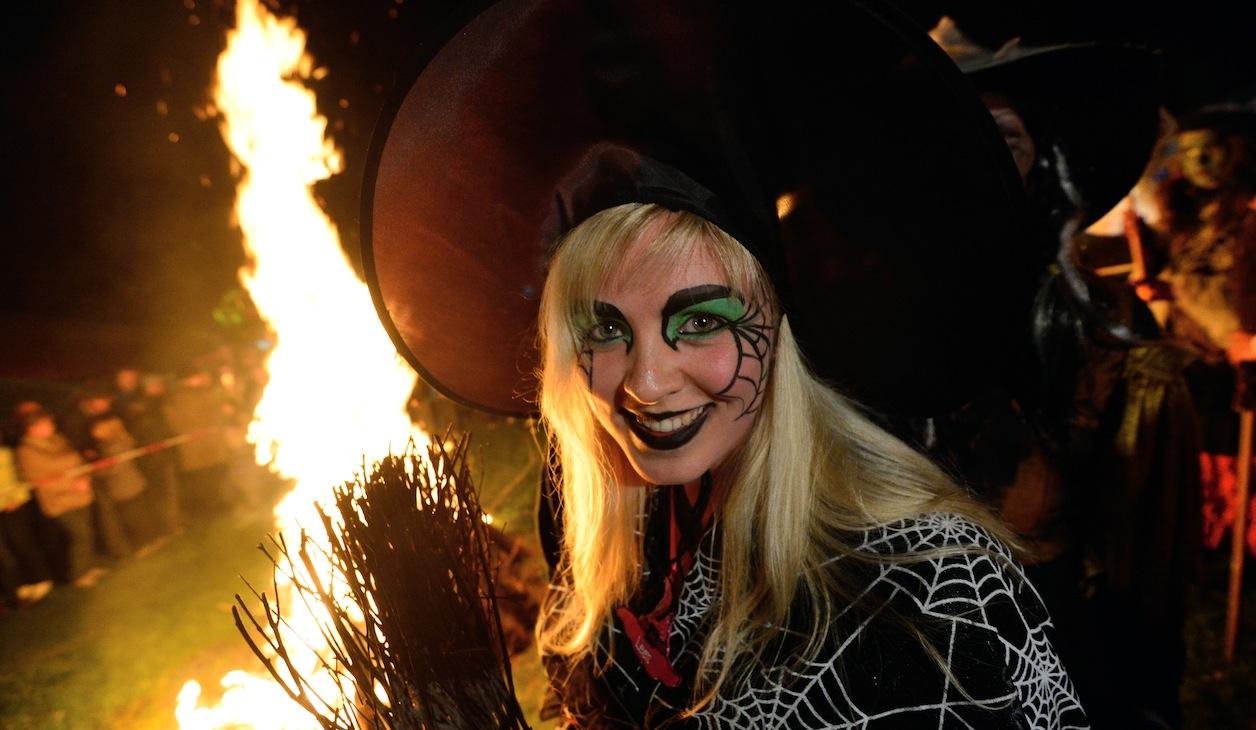Why witches are still being beheaded in India
Being accused of witchcraft is nothing to laugh—or smile—about in some parts of the world.
NEW DELHI, India — Three hundred years after the hysteria in Salem, in some places witch hunts are still terrifyingly real.
Last week, a mob of 200 people in the Indian state of Assam dragged a 65-year-old woman out of her house, stripped her and beheaded her with a machete. They did so because a self-proclaimed “goddess,” who asked them to gather at a local temple, proclaimed that the woman was a witch and would bring bad luck and illness to the village.
In a country teeming with IT graduates and higher-education institutes, such attacks are sadly and strangely common. Ninety people in Assam, a majority of them of them women, lost their lives in the last six years because they were branded as witches. According to the National Crime Records Bureau, 2,097 murders between 2000 and 2012 were committed when the victims were accused of practicing witchcraft.
With a more active regional media, horrific instances have come to light. Earlier this year, a woman in the state of Odisha was force-fed human excrement for practicing witchcraft. Last October in Assam, hundreds tied up an athlete in a fishing net and tortured her for being a witch. She had represented Assam in several national meets, and won a gold medal for javelin. In 2011, a mother and daughter in Assam were accused of witchcraft, and raped as punishment.
Superstitions like the wearing of gemstones and rings to bring good luck, or marrying on an auspicious day are common across India, and many are not violently harmful. Even in Assam, “good” witches were once socially accepted because of their purported ability to heal maladies. “Even today in many villages, because of the lack of medical facilities, people would go to a witch or a village doctor who can perform some magic to cure you,” said Chandan Kumar Sharma, a sociology professor at Tezpur University, which is located in the district where last week’s beheading took place.
“Modern society is not a monolith. Although we are modern, many segments of our society are still very backward, where education and a scientific temperament have still not reached,” said Sharma, who studies the social and ethnic practices of the Indian northeast. “Everybody knows law enforcement is very weak, and they also play on the ignorance and superstitions of the villagers,” he said of the “goddesses.” Some who practice “white magic” are believed to have the ability not only to cure people, but also to detect witches who practice black magic.
According to Sharma, witch-hunting is most common in the economically and socially marginal tea tribal communities, called so because their ancestors were brought to Assam by the British in the 19th century to cultivate the plantations. At least four other communities in Assam also believe in witchcraft, and their isolation in remote, mountainous areas has allowed these superstitions to persist even after mainstream society has abandoned them.
Because of the uneven terrain and heavy rainfall in the region, many villages are entirely cut off from more developed parts of the state. Healthcare and law enforcement are hours away, and education even more remote. “Until we make these areas accessible, literate and conscious, these kinds of things will keep happening,” says Sharma.
Non-governmental and social organizations, some founded by victims of witch-hunting themselves, have been working on raising awareness against these beliefs. Brothers, an organization that promotes development in Assam, has worked on in areas where such superstitions are rampant, and has assisted in rescuing and providing medical services to victims. Over the last few years, the organization has also initiated its own awareness campaigns against beliefs in witchcraft.
“People who make these accusations know the victim is not a ‘witch,’ but they do so because of political rivalries, property disputes or personal feuds,” said Dibyajyoti Saikia, the general secretary of Brothers. “The superstitious believe that the witch may have reduced crop production in the village, spread illnesses, or caused a death.”
The government and the police have also held sessions in remote areas which attempt to dispel the belief in witchcraft. According to the Sanjukta Parasar, the Superintendent of Police in Sonitpur district, where the incident took place, authorities have launched a community policing initiative to raise awareness of the problem.
While spreading awareness to target the root of the problem is necessary, NGOs working against superstition also felt that a law which explicitly targets witch-hunting is needed. A law prohibiting witch-hunts may sound odd in 2015, but the states of Bihar, Odisha, Jharkhand and Maharashtra already have such legislation. The Assam High Court ordered the state government to form a similar law, and the Prevention of and Protection from Witch Hunting Bill was introduced in the state legislature in April 2015. It is yet to be passed.
“I don’t know if it is laziness, but I blame the government for not working on the problem the way they are supposed to,” said Saikia, who participated in the drafting of the witch-hunting bill. “It will be difficult to control this until there is a strict law."
